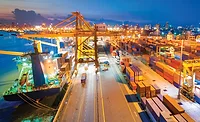Report: Global Supply Chains Remain at Risk
In spite of natural disasters such as the earthquake, tsunami and Fukushima nuclear disaster in Japan and the devastating flooding in Thailand last year, it seems that many organizations still lack complete visibility in their supply chains, which leaves them vulnerable to the next disaster, according to a press release by Marsh, an insurance broking and risk management leader.
Marsh's white paper, Supply Chain Resiliency: How Prepared Is Your Organization, was published today in an attempt to provide risk managers with knowledge of the tools available to help them mitigate supply chain risk and improve resiliency, including certain insurance options.
Natural disasters and other serious incidents can result in significant business interruption due to the impact of events on key suppliers, the report says.
“Even after repeated warnings about the fragility of supply chains, too many organizations continue to focus on efficiency at the expense of resiliency in the end-to-end design of their supply chains,” said Gary Lynch, Global Leader of Marsh Risk Consulting’s Supply Chain Risk and Resiliency Solutions Practice, and one of the authors of the report. “Many organizations also continue to suffer from a lack of collaboration between business leaders and risk managers, adding unnecessary complexity and sophistication to supply chains," he said in the press release.
The report suggests that organizations use an approach to include total exposure, including non-physical perils, aligned to the value it derives from key products or other sources of revenue. This relies heavily on analytics, and can help an organization identify single points of failure along its supply chain, as well as risk mitigation and financing options.
Risk managers are also encouraged in the report to become more familiar with emerging supply chain insurance products, which are broader than traditional contingent business interruption (CBI) and contingent extra expense (CEE) products, which do not cover increasingly frequent disruptions that are not related to physical damage. Another author of the report, senior vice president at Marsh's Property Practice, Ben Tucker uses the 2010 and 2011 eruptions of the Icelandic volcano Eyjafjallajökull as an example. The eruptions caused little physical damage to insured property, but still led to significant disruptions and delays in supply chains in and out of Europe.
Supply chain insurance products also offer protection against non-physical interruptions such as strikes, riots, ingress/egress, service interruption and pandemics, Marsh's report says.
Looking for a reprint of this article?
From high-res PDFs to custom plaques, order your copy today!






